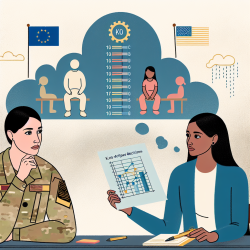The realm of mathematics education is vast and varied, much like the learners it serves. Among the myriad challenges faced by students is dyscalculia—a specific learning difficulty that affects an individual’s ability to understand numbers. The SpLD Assessment Standards Committee (SASC) has developed comprehensive guidance to better understand and assess dyscalculia and other maths learning difficulties.
The Essence of Dyscalculia
Dyscalculia is characterized by a core deficit in the sense of number, impacting an individual's ability to subitise, compare magnitudes, and order numbers. Unlike general math learning difficulties, dyscalculia is not a result of inadequate teaching or environmental factors; it stems from neurological differences that make numerical comprehension particularly challenging.
Key Differentiators
To effectively assess dyscalculia, it's crucial to differentiate it from other specific learning difficulties (SpLDs) that may also affect mathematical abilities. According to SASC, here are the distinguishing features:
- Unexpected Difficulties: Challenges are unexpected given the individual's age, education level, and overall cognitive abilities.
- Specific and Persistent: These difficulties are specific to mathematics and persist over time despite targeted interventions.
- Not Solely Caused by External Factors: Dyscalculia is not due to factors like poor teaching or math anxiety alone.
Assessment Strategies
A thorough assessment for dyscalculia should be holistic, taking into account cognitive, medical, and environmental factors. Here’s what an effective assessment should include:
- A comprehensive history that explores the individual’s mathematical journey alongside literacy and other barriers to learning.
- Cognitive tests that evaluate verbal, visual-spatial reasoning, and memory to identify strengths and weaknesses.
- Qualitative assessments using tools like dot arrays for subitising and symbolic magnitude comparison tasks.
- Standardized measures of arithmetic skills under both timed and untimed conditions to determine how time pressure affects performance.
The Role of Educators
Educators play a pivotal role in identifying and supporting students with dyscalculia. By employing strategies tailored to each student’s unique needs—such as using concrete materials or visual representations—teachers can help bridge gaps in understanding. Collaboration with specialists in mathematics education can further enhance these efforts.
For more information on dyscalculia assessment guidelines, please follow this link.










